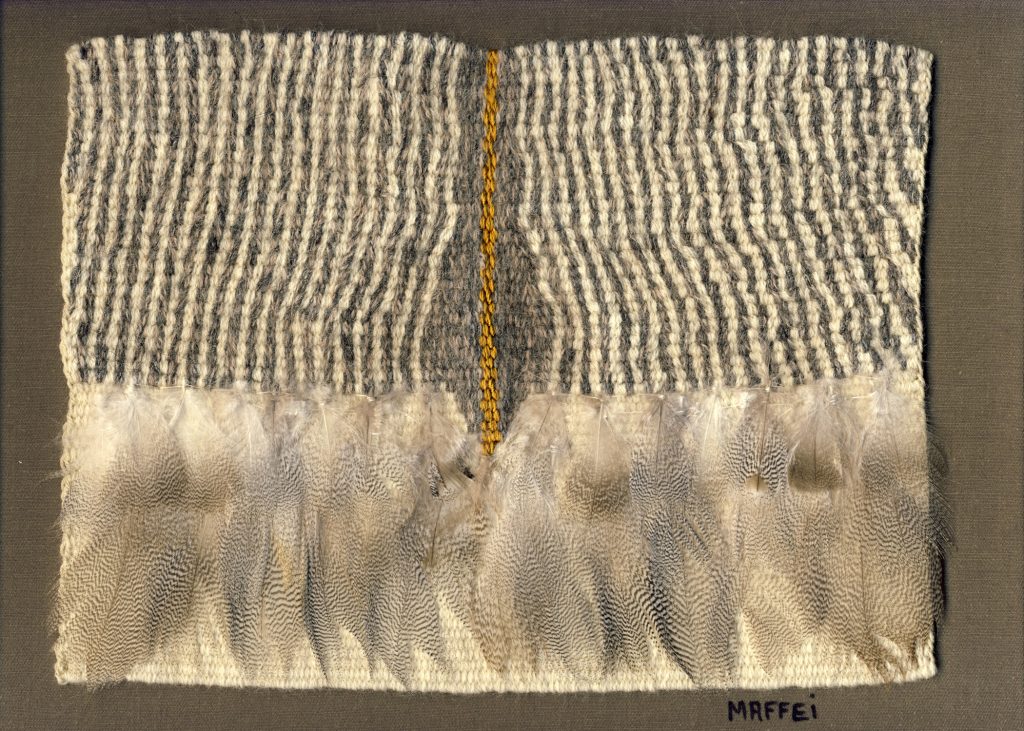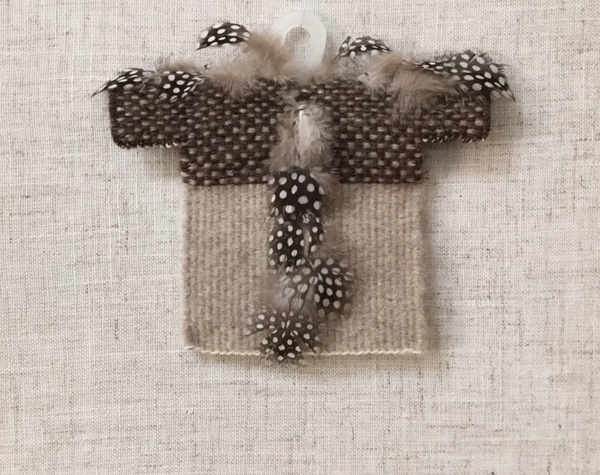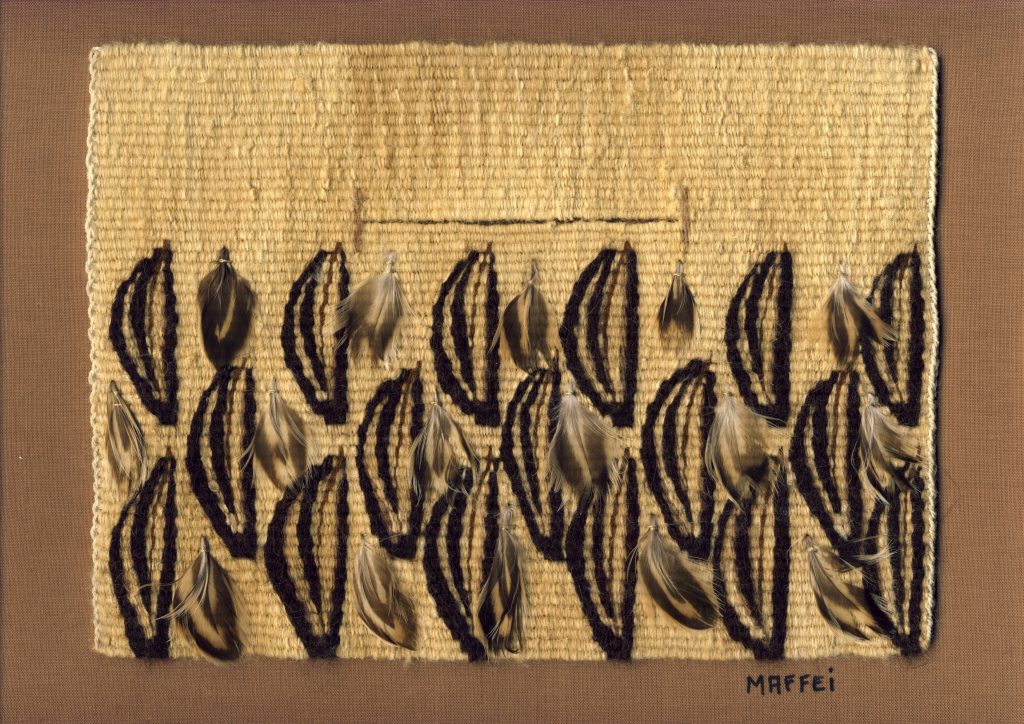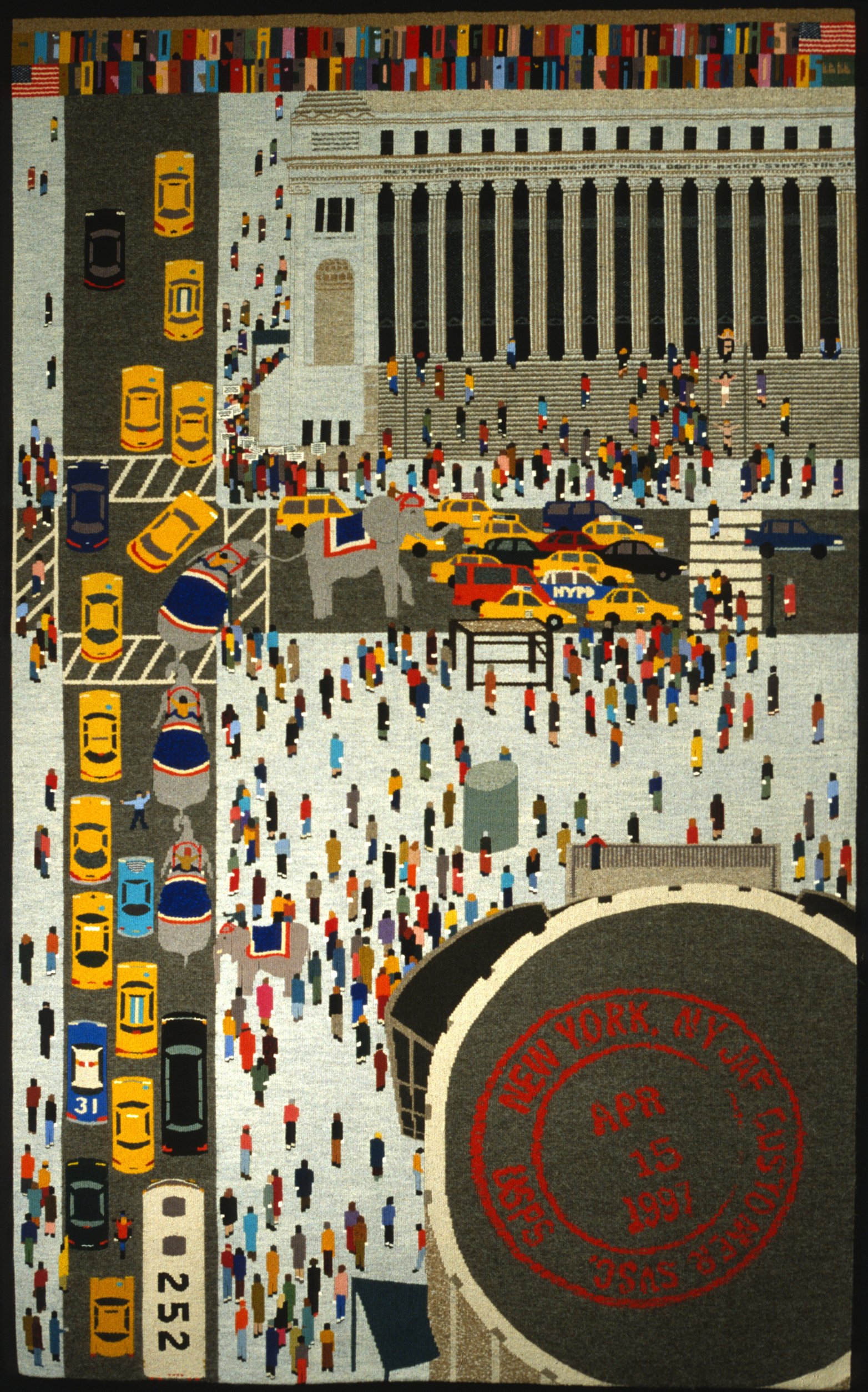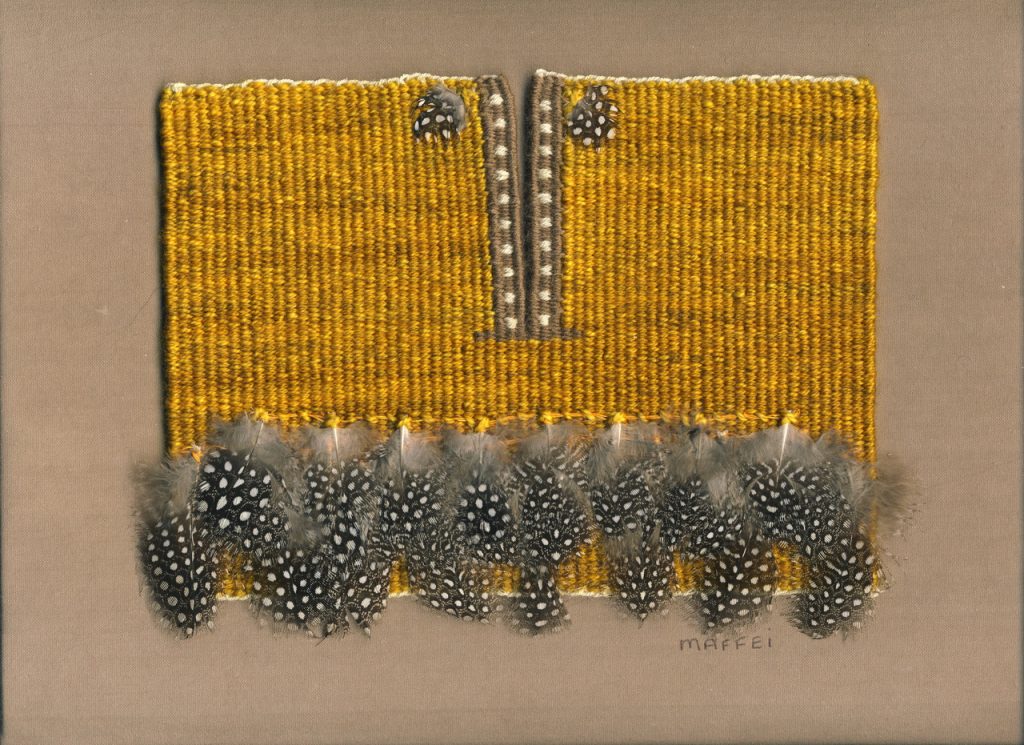
People have always had a fascination with birds and their ability to fly. Historically many cultures, such as New Zealand Maori, Hawaiian, Andean, Native American, European, etc. have all costumed or decorated themselves in real feathers and/or the depiction of feathers. Feathers are soft, delicate, surprisingly durable, beautiful objects.
Curious as to how I could use them in my work, I began an investigation into the history of the various ways feathers are attached to fabric. This led to a series of small works using the tunic (representing a person) as a basic format. Each work was an experiment in the different manners of connecting feathers to cloth. At the same time, in the weaving of the tunics, I echoed feather patterns or feather forms using more complicated structures of multi selvedge warp. Most feathers are attached in a knotted sequence on threads or cords and then sewn onto the tunic after it is completed. I have adapted this method by using a similar knotted sequence, but adding the feathers one at a time as the tunic is being woven. This is a very slow, laborious process, but yields different results, a rich fullness that is lacking when the strip of feathers is sewn flat onto the surface.
The tactile contrast of feather to yarn is somehow closely connected, like people to birds. Plush feathers against the soft hair of alpaca, or coarse hairy mohair, or smooth corded wool or plant fiber. The texture of bright colored silk yarn against the glow of brightly colored feathers. All reflect an interest in texture that, from the early years of my weaving, was one of the aspects that most drew me to tapestry. The tactile surfaces of fiber create a deep emotional connection to images.
Working with feathers led to my present explorations with the attachment of different natural materials, such as porcupine quills and thorns, in a new series about people and their relationship to animals.
Diagrams illustrating various methods used to attach feathers to a cord
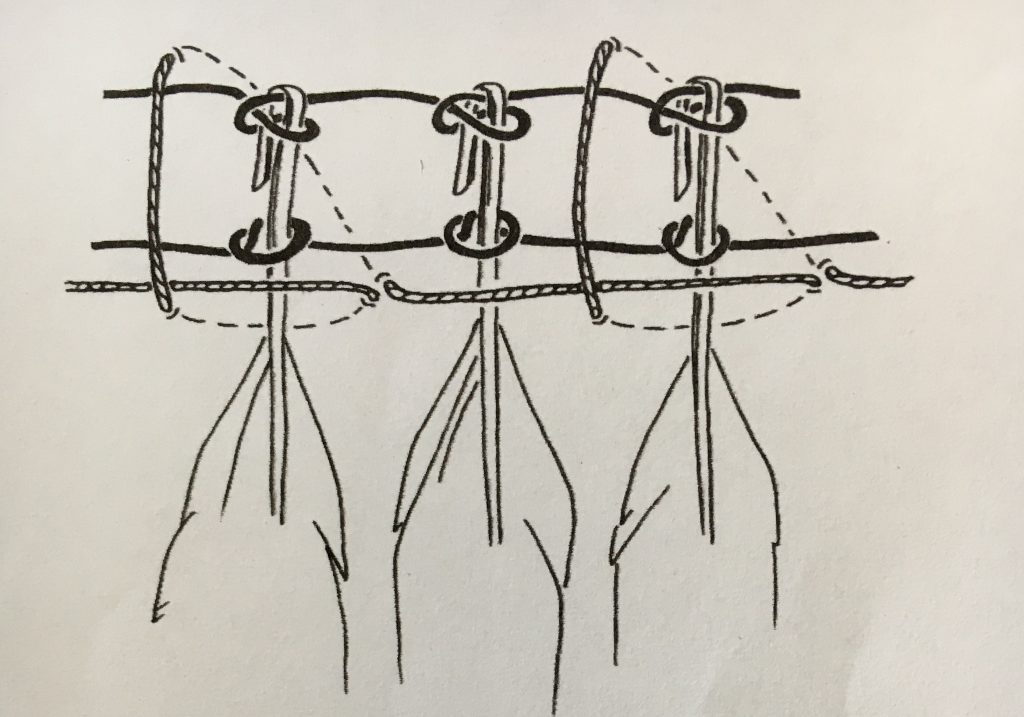
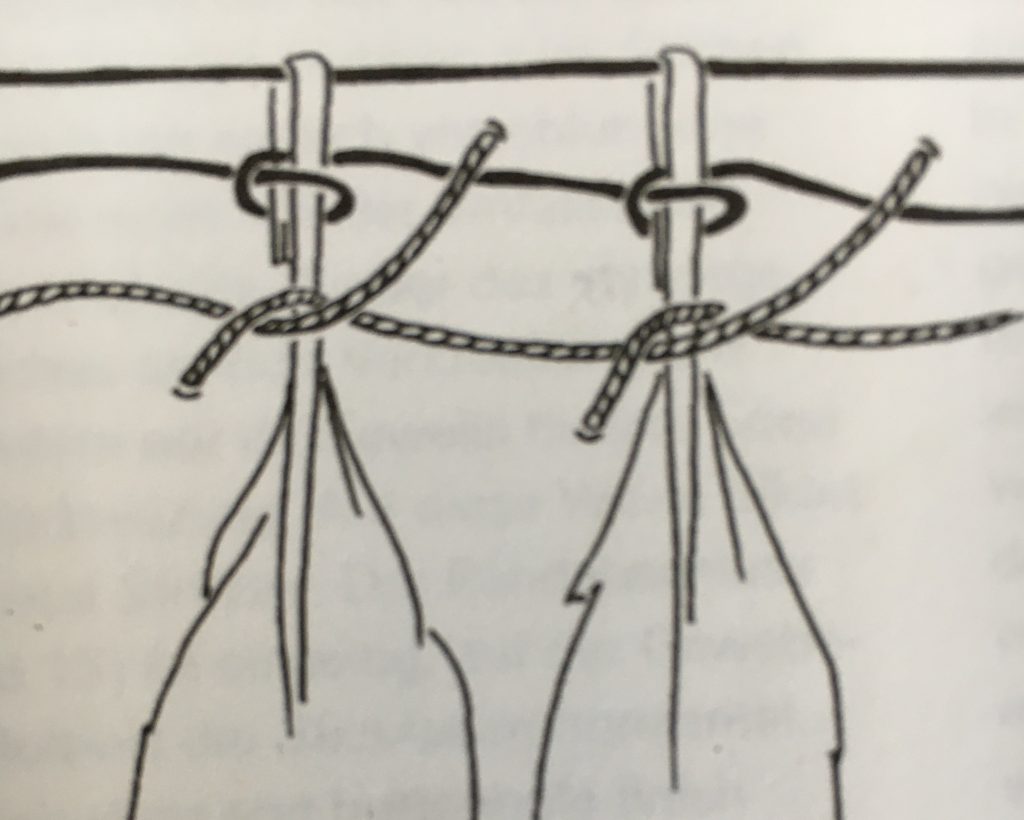
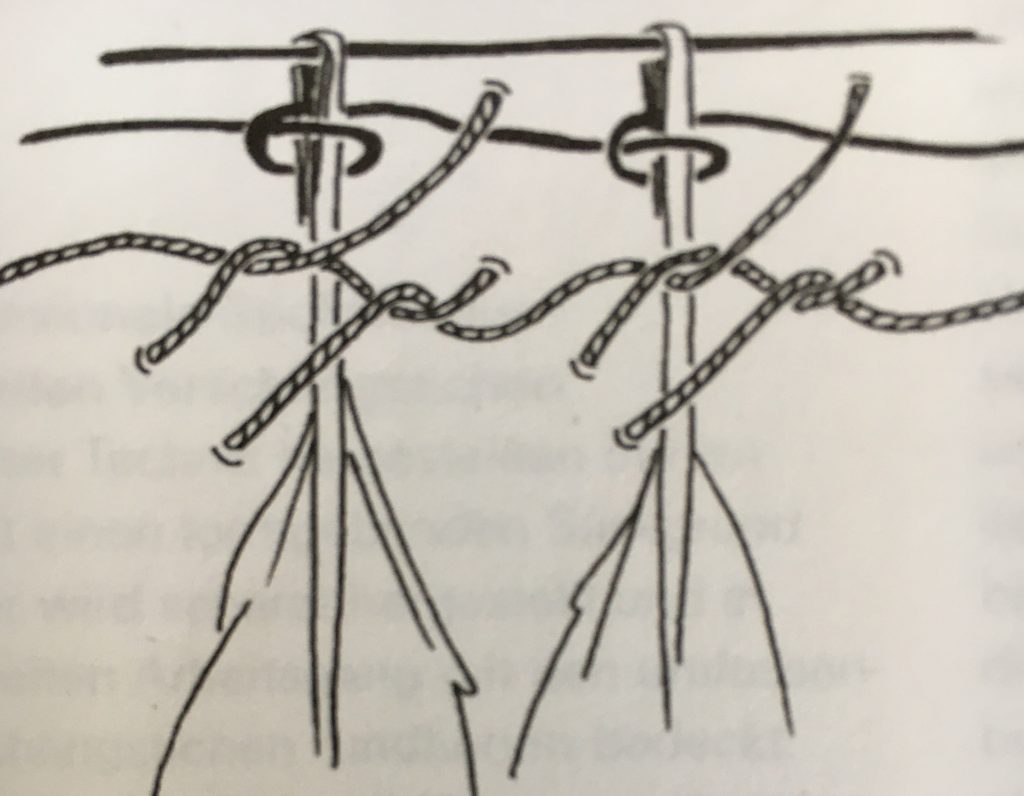
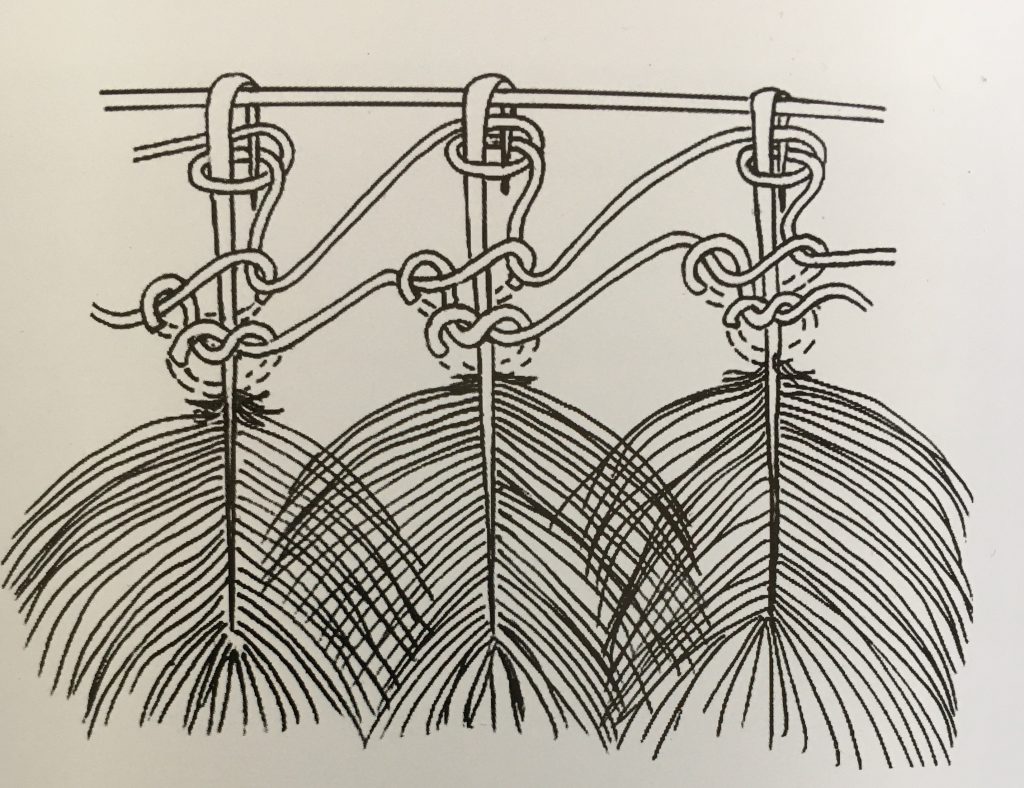
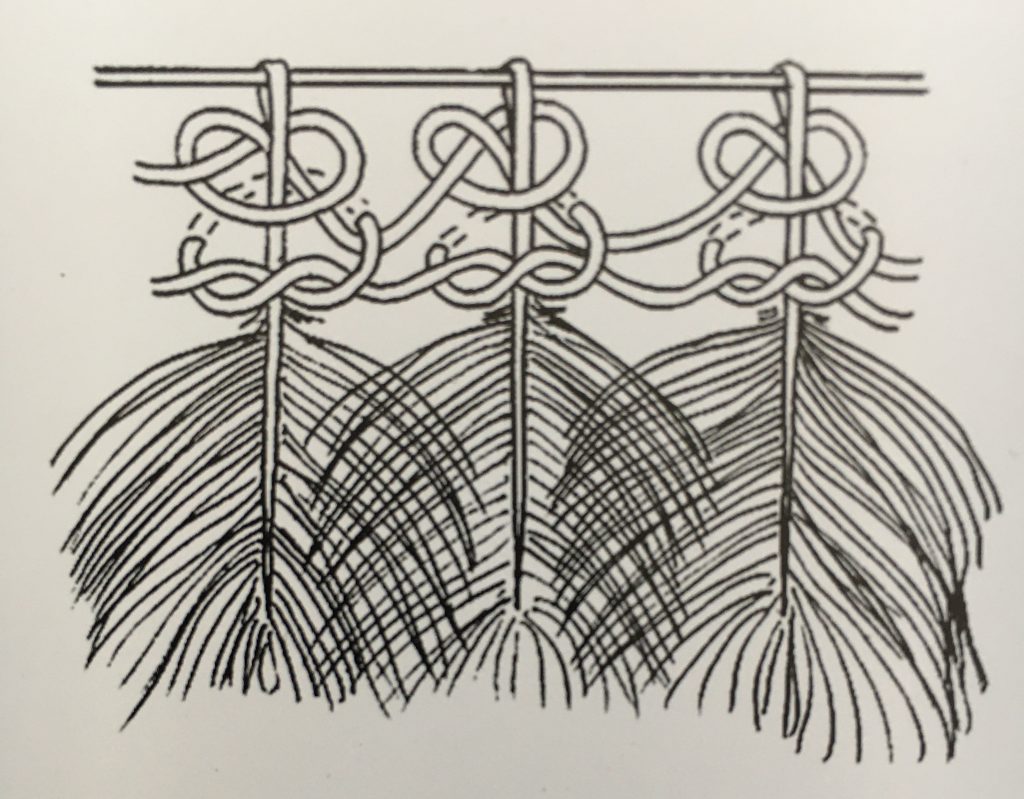
(top row and middle left) Nikkibarla Calonder & Judith Rickenbach, Textilien aus dem alten Peru, 2007, Stadt Zurich, pp. 469 & 470. (middle right and bottom) Heidi King, Peruvian Featherworks, 2012, The Metropolitan Museum of Art, p. 96.
Feathers were an important part of social status among early Andean cultures. They were used on clothing, bags, hats and ceremonial panels. Birds were cultivated for their plumage and tapirage was practiced, which is a method of plucking a feather and rubbing the area with a particular element (i.e. poison of a frog). When the feather grows back it is a desired color that is different from the bird’s natural hue. Stories from Inca times (c. 15th century) suggest that boys were given the job of netting the birds, taking a certain number of feathers and then releasing the birds to be used again when the feathers had regrown.
Image showing attached feathers
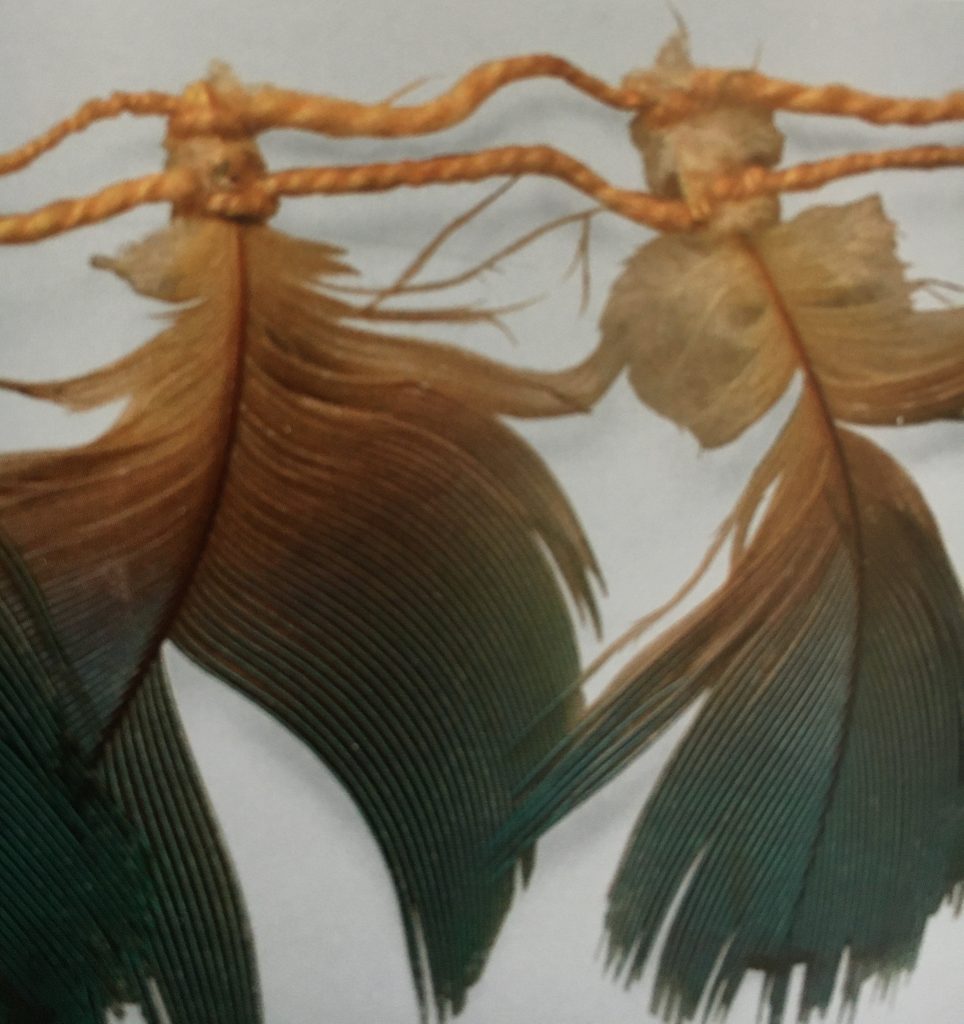
Heidi King, Peruvian Featherworks, 2012, The Metropolitan Museum of Art, p. 96.
Tapestries
Click on images to enlarge.
